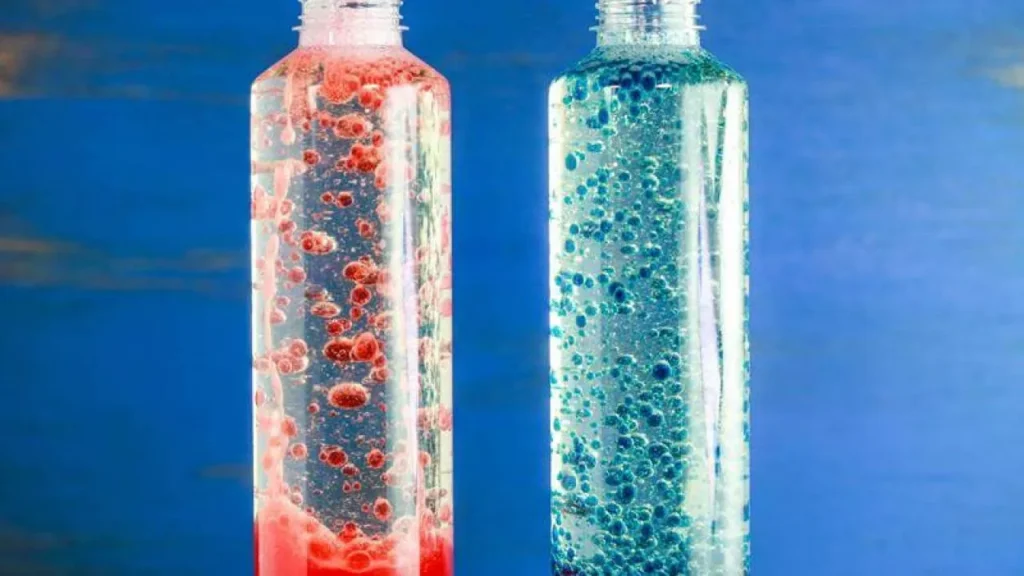
This lab experiment with a lava lamps is incredible! This experiment in science is sure to be a delight for your kids when they get to play with colors of oils and water.
There's a component that makes it more exciting!
This is a popular activity with kids. Get a few items from the house and try this lava-lamp science activity!
Lava Lamp Science Experiment
We're doing lots of exciting science experiments this year to enhance our education. This lava-lamp experiment is one of the most effective!
This test is intended for adults. Always keep an eye on your child. You must not allow your child to consume anything with their mouths.
If they keep doing this Don't try again.
Both my children had lots of fun with this. We've played it many times, with various colours. They are always amazed. They play with the toys for an extended period.
You likely already have everything you'll need for this science experiment in your classroom.
Lava Lamp Experiment
Materials required:
Amazon Associates earns from purchases.
- Vegetable Oil
- Water
- Food coloring Neon colors, primary colors
- Original Alka Seltzer tablets
Food color can be used to tint around 1/2 cup of water. Food coloring gels can be used to create vibrant hues.
Break the Alka Seltzer tablet into two or three pieces. Put the tablet in the cup or container of a small size.
The glass should be filled to 3/4 full with vegetable oil. Pour colored water in the glass up to 2 inches higher than liquid level.
It doesn't need to overflow. It's not feasible to make this an explosion experiment, unless you want to do it. This is why I prefer to do it in an ice tray. Cleanup is easy and quick.
Add the Alka Seltzer tablets into the cup. *At no time should children put the tablet in their mouth.
Why This Science Experiment Works
Food dyes with water-soluble properties stop the oil from changing colour and preventing the water from mixing it with the oil. Alka Seltzer reacts to the water and produces carbon dioxide bubbles.
Bubbles adhere to colored water blobs, and then rise towards the top. When the bubbles burst, the colored water blobs drop towards the bottom.
This lava experiment will WOW your kids. It is possible to repeat the experiment like I did.
Winter Lava Lamp Experiment!
The HTML0 Lava Lamp looks super cool. Kids will enjoy exploring colored and oil-based water with a winter twist.
The kids were ecstatic because they thought a blizzard was bubbling up inside the glass. It was an enjoyable and fascinating science experiment!
Science experiments can help to stimulate children's curiosity, ignite their imaginations and foster enthusiasm for learning! It's a great way to aid children in developing their ability to think critically, solve problems and fine motor skills.
You'll find that your kids will love learning about every aspect, from fascinating physics, to fun chemical reactions.
Hands-On Learning
Kids who actively participate in experiments are better able to comprehend complex concepts. The nature of the experiments is tactile. experiments allows children to see abstract ideas. This is something that traditional teaching methods are unable to accomplish.
Critical thinking and fostering
Science experiments can help children increase their ability to watch, analyse, and integrate new information.
Encourage Creativity
Unpredictability is a common feature of scientific experiments. The children are encouraged to be innovative and try different methods when they see unexpected results. This fosters an atmosphere of creativity where children are taught that failing isn't an excuse for failure it's an opportunity to be able to learn.
Building Self-Esteem and Confidence
The confidence of children increases as they perform experiments with good results. This boost in confidence will inspire children to take on new challenges with a sense of excitement.
Real-Life Applications
Science experiments can help bring theories to life, demonstrating how they work in the real world.
Fine Motor Skills Improved
Children can increase their motor control through conducting science experiments. Children learn through doing various tasks using their hands.
Collaboration and Bonding
The science experiments are an excellent way to connect with friends, family members and fellow classmates. Kids will create memories and build connections, regardless of whether it is a classroom event or a project for the family.
Children can learn many things from science experiments but they can also be fun!
Fun Science Experiments
This experiment in science is a fantastic method to create a rainbow. It is easy to set up and only will require two cups of drinking water, two paper towels as well as markers!
Two ingredients are all you require for this super simple Oobleck!
Dinosaur dig excavation can be a fun sport for kids who like the oobleck.
The Rainbow Walking Water Science Experiment is one of the most popular science experiments!
This simple experiment in science allows children to discover the connection between rain and clouds.
This chromatography exercise is an exciting method to introduce kids to the process of chromatography and the science behind it.